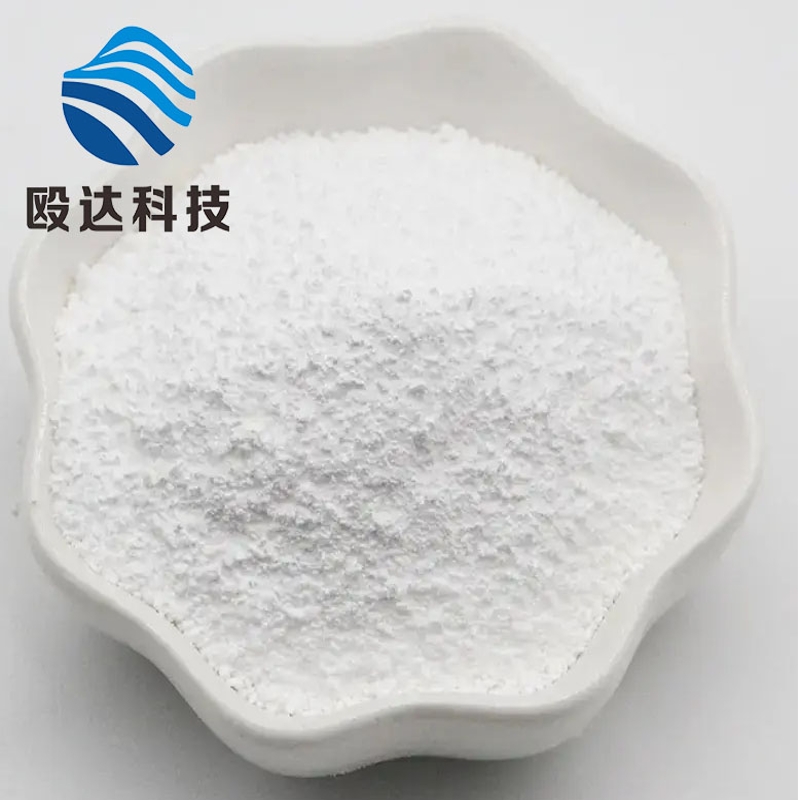-
Categories
-
Pharmaceutical Intermediates
-
Active Pharmaceutical Ingredients
-
Food Additives
- Industrial Coatings
- Agrochemicals
- Dyes and Pigments
- Surfactant
- Flavors and Fragrances
- Chemical Reagents
- Catalyst and Auxiliary
- Natural Products
- Inorganic Chemistry
-
Organic Chemistry
-
Biochemical Engineering
- Analytical Chemistry
- Cosmetic Ingredient
-
Pharmaceutical Intermediates
Promotion
ECHEMI Mall
Wholesale
Weekly Price
Exhibition
News
-
Trade Service
For medical professionals only
Focus on the course of
disease development.
Cirrhosis is a pathological stage
in which various chronic liver diseases progress to disseminated fibrosis of the liver, pseudolobular formation, and intrahepatic and extrahepatic vascular proliferation.
There are no obvious clinical symptoms in compensated cirrhosis, and cirrhosis in the decompensated stage is characterized by portal hypertension and severe impairment of liver function, and patients often die
due to multiple organ failure caused by various complications.
Here are the 5 major complications related to cirrhosis proposed by the guidelines, let's take a look together!
One
Serous effusion- Includes ascites, pleural effusion, and pericardial effusion
.
- Chyloastic ascites: milky in appearance, with triglyceride levels in ascites greater than 200 mg/dl (11.
11 mmol/L) support the diagnosis, and < 50 mg/dl excludes the diagnosis<b20>.
- Can occur in all stages of cirrhosis, and should exclude obstruction or destruction
of abdominal or thoracic lymphatic vessels caused by malignancy, abdominal surgery, sclerotherapy-related thoracic duct injury, infection (especially tuberculosis, filariasis), and congenital anomalies.
- Bloody ascites: defined as ascites with a red blood cell count > 50,000/mm3
.
- Bloody ascites should be excluded, and other causes such as severe infection (including tuberculous peritonitis), coagulopathy, and variceal rupture may also present with bloody ascites, ranging in appearance from washed to venous blood
.
- Pleural effusion: other causes
such as tuberculosis need to be excluded.
Patients with cirrhosis with pleural effusion are more common on the right side, and ascites enters the chest cavity through a diaphragmatic defect due to inhalation
.
In severe cases, bilateral pleural effusions may occur, and a small number of patients have left pleural effusions alone, and chest ultrasound or x-ray can confirm the diagnosis
.
- If pleural effusion is combined with spontaneous bacterial infection, the prognosis is not good, and the median survival is 8~12 months
.
Two
Complications such as cirrhosis and gastrointestinal bleeding- Ruptured esophageal and gastric varices are the most common cause
of gastrointestinal bleeding in cirrhosis.
- Portal hypertensive gastropathy (PHG) is caused by excessive pressure in the portal vein and its affiliated blood vessels, according to the definition of the 1992 Milan Conference: gastric mucosal and submucosal vasodilation can be seen on gastroscopy, showing "snakeskin changes" and "mosaic"
.
- PHG is the second leading cause of gastrointestinal bleeding in cirrhosis, after esophageal and gastric variceal bleeding, and multiple studies have shown that PHG is also a high risk factor
for predicting the first bleeding of gastric varices.
- 64% of patients with antral telangiectasia (GAVE) are cirrhosis of the liver, the average BMI is also higher in GAVE patients, and diabetes and nonalcoholic fatty cirrhosis are more common
in GAVE patients.
- Portal hypertension enteropathy (PHE) is a lesion characterized by intestinal vasodilation of portal hypertension, which is divided into portal hypertension colopathy and portal hypertension small enteropathy (including duodenal disease, jejunal disease, ileal disease), etc
.
Most patients have no obvious symptoms, some patients show gastrointestinal bleeding, abdominal distention, abdominal pain, most of them are lower gastrointestinal bleeding, mostly black stool, fecal occult blood positive, individual patients may have gastrointestinal bleeding
.
- Internal hemorrhoids are one of the common manifestations of cirrhosis and are often overlooked
.
- Internal hemorrhoids and PHE are important causes
of lower gastrointestinal bleeding in patients with cirrhosis.
- Portal hypertension cholangiosis (PHB) refers to the abnormality of the bile duct tree (including duodenal cystic duct and gallbladder) associated with cirrhosis of the liver cirrhosis, abnormal or thickened bile duct wall, bile duct stenosis, bile duct/gallbladder wall varices, chronic cholecystitis, and loss of bile ducts
.
Most patients have no obvious discomfort, and a few patients may have fever, epigastric pain, jaundice, skin itching and other symptoms
.
Magnetic resonance cholangiopancreatography (MRCP) is the preferred modality, and endoscopic retrograde cholangiopancreatography (ERCP) can assist in diagnosis and treatment
.
Three
- SBP is a peritonitis that occurs on the basis of cirrhosis of the liver, and occurs without a clear source of intra-abdominal lesions (e.
g.
, intestinal perforation, intestinal abscess), and pathogenic microorganisms invade the abdominal cavity, which is a common complication
in patients with end-stage liver disease such as cirrhosis.
- In addition to SBP, common infections in patients with cirrhosis include urinary tract, biliary system, gastrointestinal tract, respiratory tract, skin and soft tissue infections, and sepsis
.
The clinical manifestations are diverse, and the symptoms are often atypical, or even insidious in onset, which is easy to miss the diagnosis
.
Patients with secondary peritonitis, endocarditis, pneumonia, and sepsis have a poor
prognosis.
- Infection is considered a common precipitating factor
for liver failure in cirrhosis.
- Patients with cirrhosis have liver microcirculation disorders, local and systemic inflammation of the liver, immune disorders, and intestinal microecological imbalances, which are all risk factors
for infection.
Conversely, infection is also a high-risk factor
for complications and death in patients with cirrhosis.
Four
- Hepatic encephalopathy is a neuropsychiatric syndrome
of varying severity and severity based on metabolic disorders caused by severe liver dysfunction or various portosystemic shunt abnormalities.
- Patients with cirrhosis should be screened for mild hepatic encephalopathy (MHE).
Clinically, hepatic encephalopathy should be distinguished
from hepatic myelopathy (HM), acquired hepatoencephaloencephalopathy and other diseases.
1.
Hepatic myelopathy (HM)
- Hepatic myelopathy is more common in cirrhosis, liver cancer, and liver failure caused by various causes (viral, autoimmune, alcoholic, drug-based, non-alcoholic fatty liver disease, genetic metabolism, etc.
).
- Hepatic myelopathy may be considered in addition to the exclusion of other neurological disorders if accompanied by: progressive bilateral lower extremity weakness, scissor gait, or inability to walk on the basis of chronic liver disease; Neurological examination showed spastic paraplegia, no obvious muscle atrophy and superficial sensory impairment, increased muscle tone, and enhanced
plantar extensor reflexes.
Lumbar puncture to check for cerebrospinal fluid to exclude inflammatory lesions of the spinal cord; Magnetostimulatory motion-evoked potential examination can detect abnormal central motor conduction time due to early hepatic myelopathy; history of transjugular intrahepatic intraluminal stent shunt (TIPS) or portosystemic shunt surgery; Abdominal ultrasound, CT, and MRI to find collateral circulation formation are all helpful for diagnosis
.
2.
Acquired hepatoencephalithral degeneration
- A rare and mostly irreversible neurological impairment of clinical syndromes
caused by chronic liver disease.
- The onset is generally insidious and mostly manifested by mental abnormalities, cognitive decline, Parkinson's syndrome, and movement disorders such as ataxia, intention tremor, chorea, and neuropsychological changes such as mental and behavioral abnormalities and intellectual disability, and functional magnetic resonance imaging can be identified
.
Five
includes acute kidney injury (AKI), hepatorenal syndrome-acute kidney injury (HRS-AKI), hepatorenal syndrome-non-acute kidney injury (HRS-NAKI), chronic kidney disease (CKD).
What are the diagnostic criteria for compensated and decompensated cirrhosis of the liver? How to treat the cause symptomatically? What clinical signs and symptoms are prioritized for diagnosing a disease?
Open the clinical guideline module of the decision assistant App, and the dialogue with the major guidelines at home and abroad authoritative guidelines and the "clinical guidelines" module of the decision assistant have 👇
1.
Scan the QR code below
2.
Download the Clinical Decision Assistant App 3.
Open the Decision Assistant App
and click the icon
4.
Search for the guide you want to see
Download the app and learn a new guide every day!
Download the decision assistant App, the guide is free at any time ~References: [1] Guidelines for the diagnosis and treatment of cirrhosis 2019 ▼▼▼Click to read the original article to download the App







